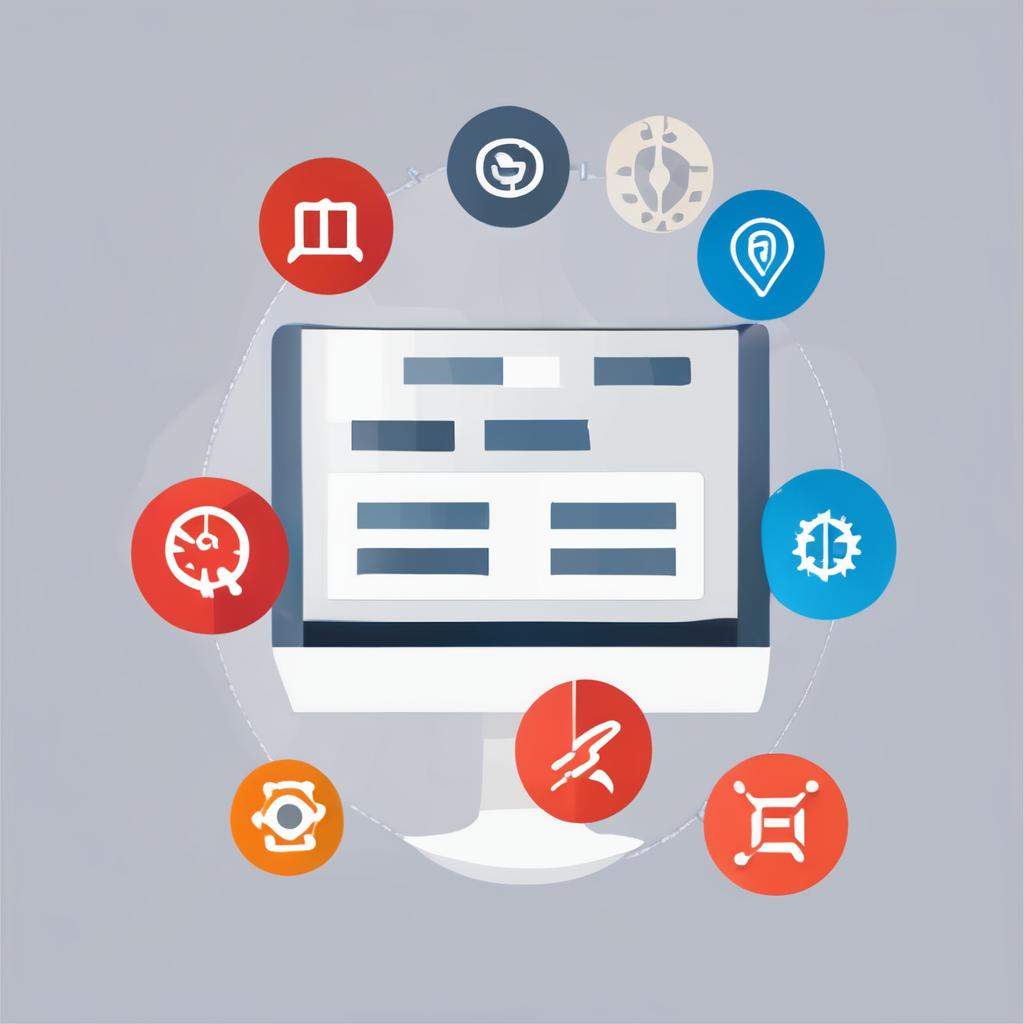Unlocking Robust Microservices Communication: A Comprehensive Guide to Essential mTLS Techniques
In the modern landscape of software development, microservices architecture has become a cornerstone for building scalable, flexible, and resilient applications. However, as the number of microservices increases, so does the complexity of their communication. This is where Mutual Transport Layer Security (mTLS) comes into play, offering a robust and secure way to manage inter-service communication. In this guide, we will delve into the world of mTLS, exploring its benefits, implementation, and best practices to ensure your microservices communicate securely and efficiently.
What is Mutual Transport Layer Security (mTLS)?
mTLS is an extension of the standard Transport Layer Security (TLS) protocol, designed to provide an additional layer of security by authenticating both the client and the server. Unlike TLS, which only authenticates the server, mTLS ensures that both parties in the communication are verified before any data is exchanged[2].
Topic to read : Essential techniques to enhance your wordpress site”s security: proven strategies from experts
Key Differences Between mTLS and TLS
To understand the significance of mTLS, it’s crucial to compare it with standard TLS:
| Feature | TLS | mTLS |
|---|---|---|
| Authentication | Unidirectional (server only) | Bidirectional (client and server) |
| Certificates | Server certificates only | Client and server certificates |
| Handshake | Standard TLS handshake | Additional steps for client authorization |
| Access Control | Limited | Granular control through client certificates |
| Security | Good | Enhanced protection against MITM attacks |
| Overhead | Lower | Higher resource usage due to extra steps |
| Adoption | Widespread | Less common, but growing in sensitive applications |
How mTLS Authentication Works
mTLS relies on public key infrastructure (PKI) with digital certificates issued by a trusted certificate authority (CA). Here’s a step-by-step breakdown of the mTLS authentication process:
This might interest you : Mastering machine learning deployment: the ultimate guide to using aws sagemaker for success
- Issue Client and Server Certificates: The CA issues unique X.509 certificates to each client and server.
- Exchange Certificates During Handshake: The client sends its certificate along with the “ClientHello” in the TLS handshake. The server authenticates this certificate and responds with its own.
- Validate Certificates: Both the client and server validate each other’s certificates using the CA’s public key.
- Check Certificate Revocation Lists: Ensure the certificates are not revoked.
- Use Public Keys for Encrypted Session: Exchange session keys to establish an encrypted connection.
- Achieve Bidirectional Authentication: Both parties are authenticated, ensuring secure communication[2].
Implementing mTLS in Microservices Architecture
Implementing mTLS in a microservices architecture is crucial for ensuring the security and integrity of inter-service communication. Here are some best practices and steps to follow:
Obtain and Configure Certificates
- Get Certificates from a Trusted CA: Obtain client and server certificates from a reputable CA like Sectigo or DigiCert.
- Configure Servers: Set up servers to request and validate client certificates.
- Distribute Certificates: Ensure all clients have the necessary trusted CA certificates and their own client certificates[2].
Use Service Mesh for Simplified Management
Service meshes like Istio, Linkerd, and Consul can significantly simplify the implementation and management of mTLS in microservices environments. These tools automate the process of certificate management, load balancing, and traffic routing, ensuring that your services communicate securely without modifying the application code[5].
Use Cases for mTLS in Microservices
mTLS is particularly useful in several scenarios where security and accountability are paramount:
Securing APIs
APIs are a common point of interaction between microservices. Using mTLS ensures that only authorized clients can access specific API endpoints, enhancing the overall security of the application[2].
Microservices Communication
In a microservices architecture, mTLS authenticates requests between individual services and encrypts inter-service traffic, preventing unauthorized access and data breaches[2].
Banking and Financial Transactions
Banks and financial institutions use mTLS to secure transactions between clients and servers, verifying the identities of both parties involved in sensitive transactions[2].
Healthcare Applications
Healthcare organizations leverage mTLS to secure access to patient records, ensuring compliance with regulations like HIPAA and maintaining the confidentiality of sensitive data[2].
Combining mTLS with Other Communication Methods
Microservices often use a combination of communication methods to achieve optimal performance and flexibility. Here’s how mTLS can be integrated with other techniques:
Synchronous vs. Asynchronous Communication
- Synchronous Communication: Methods like HTTP/HTTPS are synchronous, where the client waits for a response from the server. However, this can lead to performance issues if one service in the chain is impaired[4].
- Asynchronous Communication: Using messaging systems like Message Queues (MQ) or Event-Driven Architecture (EDA) allows for more flexibility and scalability. mTLS can be used to secure these asynchronous communications[4].
Single Receiver vs. Multiple Receivers
- Single Receiver: In a single receiver design, each request is processed by exactly one service. mTLS can secure these point-to-point communications.
- Multiple Receivers: In a multiple receiver design, requests can be processed by multiple services. mTLS ensures that all communication between these services is secure and authenticated[4].
Best Practices for mTLS Implementation
To ensure a smooth and secure implementation of mTLS, follow these best practices:
Monitor and Audit
- Monitor TLS Connection Failures: Keep an eye on TLS connection failures that may indicate certificate issues.
- Audit Logs: Regularly audit logs to verify that mTLS is working correctly and to identify any potential security breaches[2].
Handle Certificate Revocation and Rotation
- Certificate Revocation: Ensure that revoked certificates are promptly removed from the system.
- Certificate Rotation: Regularly rotate certificates to maintain security and prevent certificate expiration issues[2].
Integrate with CI/CD Pipelines
- Automate Certificate Management: Use CI/CD tools like Jenkins or GitLab CI to automate the issuance, distribution, and rotation of certificates.
- Automate Testing: Include automated testing for mTLS connections in your CI/CD pipelines to ensure that the setup is correct and secure[5].
Real-World Examples and Anecdotes
Alibaba’s Microservices Architecture
Alibaba, one of the world’s largest e-commerce platforms, uses a sophisticated microservices architecture that includes stateless and stateful services. Communication between these services follows various paradigms, including IPC, remote invocation, and indirect communication. Implementing mTLS in such a complex architecture ensures that all inter-service communications are secure and authenticated[1].
Spring Boot and Feign Client
For developers using Spring Boot, integrating mTLS with Feign Client can simplify the process of establishing secure RESTful communications between microservices. This approach ensures that each service call is authenticated and encrypted, enhancing the overall security of the application[3].
In conclusion, mTLS is a powerful tool for securing microservices communication, especially in cloud-native and distributed environments. By understanding how mTLS works, its benefits, and best practices for implementation, you can significantly enhance the security and reliability of your microservices architecture.
Practical Insights and Actionable Advice
- Start Small: Begin by implementing mTLS in a small subset of your microservices to test and refine your approach before scaling up.
- Use Service Mesh: Leverage service meshes to automate and simplify the management of mTLS in your microservices environment.
- Monitor and Audit: Regularly monitor and audit your mTLS setup to ensure it is working correctly and to identify any potential issues early.
By following these guidelines and integrating mTLS into your microservices architecture, you can ensure robust, secure, and efficient communication between your individual services, ultimately leading to a more resilient and scalable application.
Table: Comparing mTLS with Other Security Protocols
| Protocol | Authentication | Certificates | Security | Use Cases |
|---|---|---|---|---|
| TLS | Unidirectional | Server only | Good | General web traffic |
| mTLS | Bidirectional | Client and server | Enhanced | Sensitive applications (banking, healthcare) |
| OAuth | Token-based | Client ID and secret | Good | API access control |
| JWT | Token-based | Client and server | Good | Real-time authentication |
Detailed Bullet Point List: Steps to Implement mTLS
-
Obtain Client and Server Certificates:
-
Get unique X.509 certificates from a trusted CA.
-
Ensure certificates contain the entity’s public key and other identifying details.
-
Configure Servers:
-
Set up servers to request and validate client certificates.
-
Use tools like Istio or Linkerd to automate certificate management.
-
Distribute Certificates:
-
Ensure all clients have the necessary trusted CA certificates and their own client certificates.
-
Use CI/CD pipelines to automate certificate distribution.
-
Exchange Certificates During Handshake:
-
The client sends its certificate along with the “ClientHello” in the TLS handshake.
-
The server authenticates this certificate and responds with its own.
-
Validate Certificates:
-
Use the CA’s public key to validate certificates.
-
Check certificate revocation lists to ensure certificates are not revoked.
-
Use Public Keys for Encrypted Session:
-
Exchange session keys to establish an encrypted connection.
-
Ensure both parties are authenticated before data exchange.
-
Monitor and Audit:
-
Monitor TLS connection failures to identify certificate issues.
-
Regularly audit logs to verify mTLS is working correctly and to identify potential security breaches.
By adhering to these steps and best practices, you can ensure that your microservices communicate securely and efficiently, leveraging the full potential of mTLS in your application architecture.











